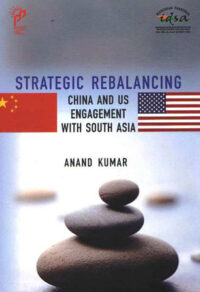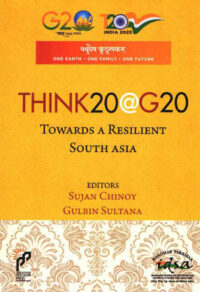The Bangladesh Question and World Politics
The gruesome events in East Bengal since March 25, 1971 and their repercussions on India easily constitute the most appalling experience of the society of nations since the end of the Second World War; and the refugee problem is the largest and the worst during the present century. It has few parallels in history. This is all the more shocking because of the context and background in which it happened.
Pakistan: The Balochistan Conundrum
It is not often that Pakistan is talked of in terms of the diversities it embodies. It is, perhaps, its descent into extremism and violence that has overshadowed every other characteristic of the country. Tilak Devasher peeks into this rather less traversed dimension and provides an analysis on the festering insurgency in Balochistan. The book provides a lucid account of Balochistan’s history, geography, and demography.
Gambling with Violence: State Outsourcing of War in Pakistan and India
Yelena Biberman offers a new framework for understanding why and how states ‘outsource’ war to local non-state actors despite the risks of forfeiting the state’s monopoly over violence. Specifically, she explores state and non-state alliances in counter-insurgencies in India and Pakistan. Taking a qualitative approach, Biberman argues that ‘state-nonstate alliances are balance-of-interests bargains’ wherein the ‘state seeking to shift the local balance of power in its favor may enlist activists if it can cultivate social or ideological ties with them’
US-Taliban Talks for Afghan Peace: Complexities Galore
The ongoing dialogue between the US and the Taliban has generated lot of interest among strategic analysts in the region and beyond. There are indications that the Taliban are hardening their position as the US appears to be in a haste to pull off an agreement.
Decimating Democracy in 140 Characters or Less: Pakistan Army’s Subjugation of State Institutions through Twitter
The Directorate General of Inter Services Public Relations (DG-ISPR), or the Pakistan Army’s media wing has perfected the form of subverting democracy and showcasing the dominant position of the Army in the entire Pakistani polity. This article sets out to prove the same in a quantified manner. By analysing almost 25 tweets from the official account of DG-ISPR in the period 2016 ?18, the article tries to quantify, using the Merkel-Croissant model of embedded democracy, the priorities of the Pakistan Army.
Political Indifference and State Complicity: The Travails of Hazaras in Balochistan
Pakistan is a forbidding place for minorities—confessional, sectarian and ideological. Violence, direct and structural and exacted with eerie regularity has ghettoised minority communities and forced them to flee. Among them, no other community is being subjected to such annihilatory violence as the Hazaras in the Balochistan province. Hazaras are an ethnic group predominantly based in Afghanistan, but also with a sizeable population in Pakistan, with estimates ranging between 650,000 and 900,000.
Considered Chaos: Revisiting Pakistan’s ‘Strategic Depth’ in Afghanistan
Pakistan’s historical insecurity towards India and the Islamisation of its military raises a curious question of strategy and identity rooted in Pakistan’s political genesis. This article examines the social and geostrategic factors underpinning Pakistan’s Afghanistan approach between its inheritance of security principles from colonial administration after Partition, and the Taliban’s capture of Kabul in 1996 and beyond. This article also critically analyses the existing link between the Taliban and Pakistan’s Inter-Services Intelligence agency (ISI).
India’s Bilateral Security Relationship in South Asia
The article argues that the contours of a security architecture are becoming slowly visible in South Asia. This process is nurtured by two developments. First, since the 2000s, India has increased its security cooperation with nearly all its neighbours in South Asia. Second, since 2013 governments in New Delhi have promoted the concept of India as a security provider in the region and the Indian Ocean.
How Sri Lanka Walked into a Debt Trap, and the Way Out
Sri Lankans love to project their country as the land of serendipity. So, when the island country saw the back of a four-decade-old violent Tamil insurgency in 2009, it was expected that it would surge ahead in a serendipitous way. The turn of events ever since has, however, proved that the country has not been that fortunate. In fact, immediately after the conclusion of the war, Sri Lanka (re)lapsed into multiple crises, occasioned by a regime which functioned in an authoritarian manner.

















